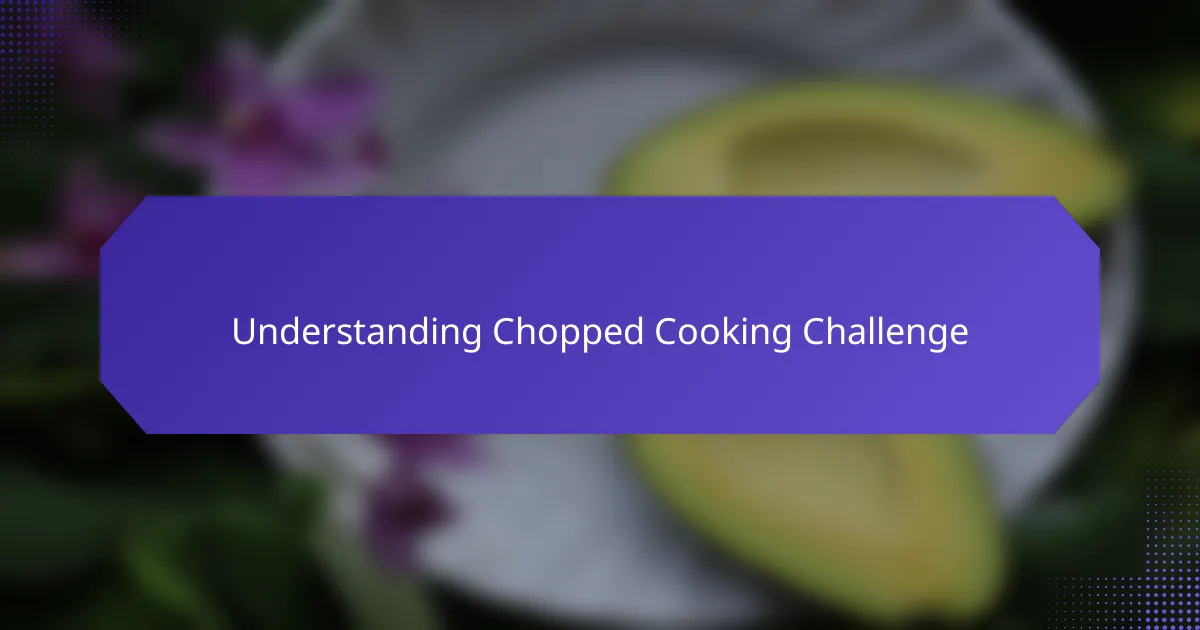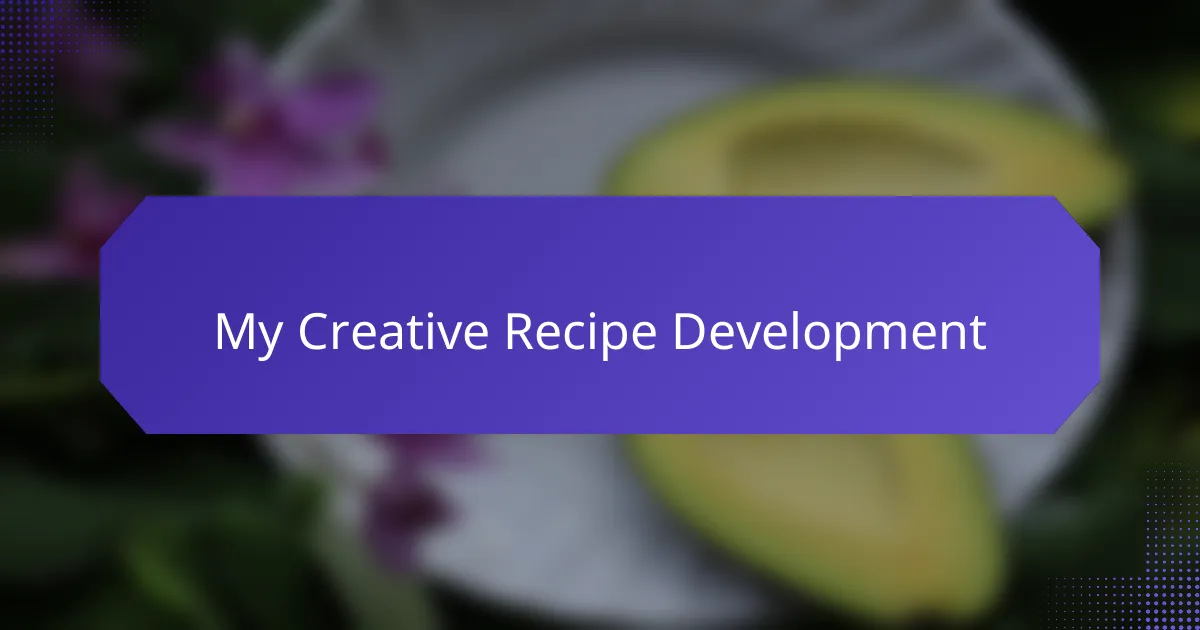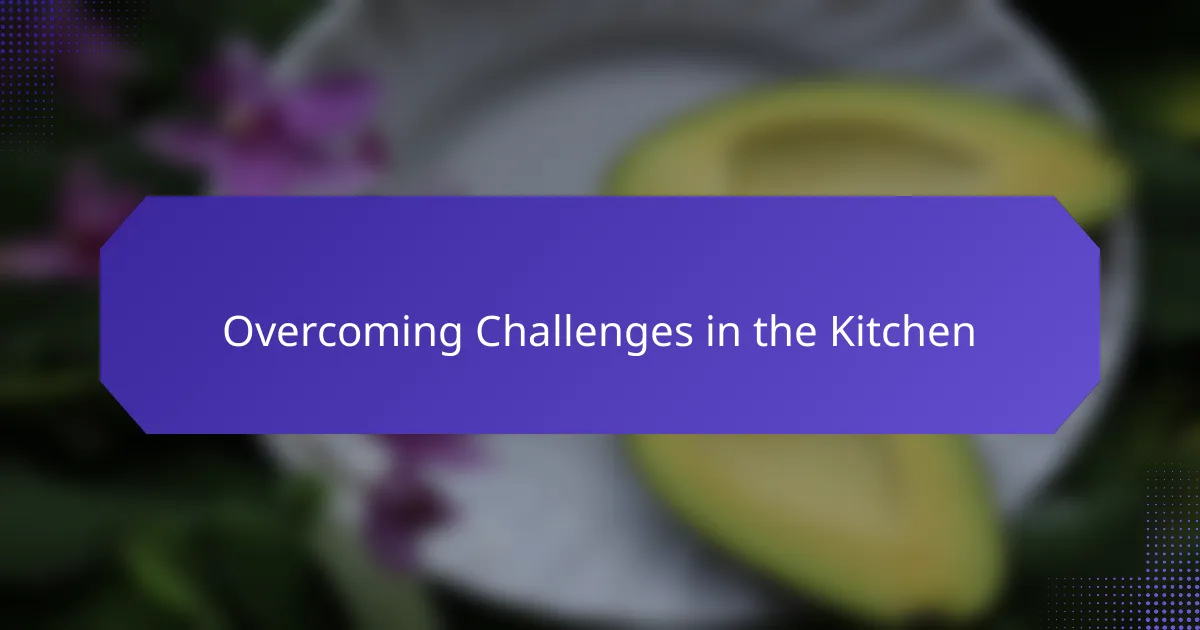Key takeaways
- Cooking challenges enhance creativity and camaraderie by encouraging participants to adapt and learn from each other.
- The Chopped Cooking Challenge emphasizes the importance of mystery ingredients, time constraints, and balanced judging criteria.
- Successful meal planning involves categorizing ingredients, being flexible, and focusing on a few key recipes to optimize time and creativity.
- Collaboration and a positive mindset are essential for overcoming obstacles and turning unexpected ingredients into delightful dishes.

Introduction to Cooking Challenges
Cooking challenges are an exciting way to test your culinary skills and creativity. They often push you beyond your comfort zone, making the process both exhilarating and, at times, daunting. I remember when I first faced the Chopped Cooking Challenge; the adrenaline rush paired with the thrill of surprise ingredients made it a memorable experience.
One of the most appealing aspects of cooking challenges is how they build camaraderie and foster creativity among participants. You get to see how different chefs interpret the same ingredients, which often leads to delightful surprises. It’s not just about cooking; it’s also about embracing spontaneity and learning from one another.
Here’s a quick comparison of some popular cooking challenges:
| Challenge Type | Description |
|---|---|
| Chopped | Contestants create dishes using mystery ingredients within a time limit. |
| MasterChef | Home cooks compete in various challenges to impress judges. |
| Baking Challenge | Focuses specifically on baking techniques and recipes. |
| Iron Chef | Cooks battle with a secret ingredient revealed at the start. |

Understanding Chopped Cooking Challenge
Participating in a Chopped Cooking Challenge is an exhilarating experience that truly tests your skills in the kitchen. You’re given a basket of mystery ingredients, and suddenly, the pressure is on. I remember standing there, heart racing, as I opened my basket to find a mix of items that seemed impossible to work with. The thrill of transforming those peculiar ingredients into a cohesive dish is what makes this challenge so rewarding.
Here are some key aspects of the Chopped Cooking Challenge that I discovered during my experience:
- Mystery Ingredients: Each challenge offers four mystery items, which can range from traditional foods to exotic ingredients, pushing your creativity.
- Time Constraint: You typically have a strict time limit, often just 30 minutes, which heightens the suspense and excitement.
- Judging Criteria: Dishes are judged based on taste, presentation, and originality, so balancing all three is crucial.
- Adaptability: The challenge teaches you to adapt quickly to unexpected situations, encouraging culinary growth.
- Emotional Journey: The mix of anxiety, excitement, and pride that comes from successfully creating a dish adds to the overall experience.

Essential Ingredients for Success
When it comes to facing the Chopped Cooking Challenge, the right ingredients can make all the difference. I remember feeling overwhelmed by the mystery basket, but focusing on a few essential items helped me navigate my way through the chaos. Key ingredients like a versatile protein, fresh vegetables, and bold spices not only saved my dish but also sparked my creativity when time was short.
I believe that the essence of success lies in knowing how to combine flavors that work harmoniously together. For instance, using a basic protein like chicken can take on varying flavors depending on the spices and herbs you choose. It’s this interplay that often brings unexpected delight to your dishes. Reflecting on my experience, I realized that cooking with confidence comes from knowing your ingredients intimately.
Now, let’s take a look at a comparison of some essential ingredients that can elevate your cooking challenge:
| Ingredient | Role in Cooking |
|---|---|
| Chicken | Versatile protein base for various cuisines |
| Fresh Vegetables | Adds color, texture, and nutrition |
| Spices and Herbs | Brings depth and flavor to any dish |

Strategies for Meal Planning
When it comes to meal planning for a cooking challenge, I have found that mapping out my ideas can really clarify my thought process. I often jot down potential flavor combinations or dish concepts beforehand. This not only helps me visualize the end result but also gives me a solid foundation to pivot from when surprises arise—like when I discovered a quirky ingredient in my basket that I hadn’t anticipated!
Another strategy I’ve adopted is to categorize the ingredients into essential groups: proteins, veggies, grains, and spices. Doing this allows me to easily identify what I can create on the fly. For example, having a reliable protein paired with seasonal vegetables can spark a range of dishes. I remember one time, I had a basket with chicken and an unusual fruit; by knowing how to balance flavors, I crafted a surprisingly delightful dish that impressed the judges.
Lastly, I always remind myself to be flexible. When facing a time crunch, sticking to a few key recipes can save precious minutes. I learned this the hard way; during my first challenge, I tried to tackle too many complex dishes. The stress of the clock pushed me, but limiting my options allowed for more focused creativity. How have you approached meal planning under pressure? Sometimes, that strategic simplicity is where the best meals come to life.

My Creative Recipe Development
My approach to recipe development during the Chopped Cooking Challenge was all about improvisation and letting my instincts guide me. I vividly remember the moment I discovered a can of coconut milk in my mystery basket. Instantly, my mind raced with ideas! I decided to create a coconut curry, using whatever veggies I could find. It turned out to be one of those “happy accidents” where unexpected combinations lead to something truly delicious.
Moreover, blending cuisines can really spark inspiration. For instance, when I had a basket that included Italian ingredients, I embraced the idea of merging flavors with Asian spices. By adding sesame oil to a traditional pasta dish, I created a surprisingly delightful fusion that caught the judges’ attention. It felt rewarding to break the mold and challenge the norms of cooking.
Throughout this creative journey, I learned that the best recipes often emerge from the chaos of the challenge. Every unfamiliar ingredient became a puzzle piece waiting to be fitted into a larger picture. Have you ever had a dish come together serendipitously? Those moments, where creativity meets spontaneity, not only define the challenge but also remind us of the joy in cooking.

Overcoming Challenges in the Kitchen
Facing the Chopped Cooking Challenge was an exhilarating experience, but it was packed with hurdles. I remember staring at the mystery ingredients—a watermelon, a can of chickpeas, and a block of cheese—and feeling the familiar rush of panic. However, rather than sink into despair, I took a deep breath and focused on how I could creatively combine these items into a dish.
Throughout the challenge, I learned that embracing unpredictability is key to overcoming kitchen obstacles. Sometimes, the ideas that seem far-fetched can lead to the most delightful surprises. I also found that having a positive mindset and being adaptable made a significant difference; I couldn’t control what I was given, but I could control my response to it.
- Keep a calm demeanor when faced with unexpected ingredients.
- View challenges as opportunities for creativity and growth.
- Use your instincts and experience to guide your cooking decisions.
- Embrace mistakes; sometimes, they can lead to delicious outcomes.
- Collaborate and share insights with fellow cooks for fresh perspectives.

Tips for Future Cooking Challenges
Finding success in future cooking challenges requires a combination of preparation and adaptability. One of my go-to tips is to practice with a mystery basket at home. I set a timer and pull random ingredients from my pantry. This not only helps simulate the pressure of the challenge but also enhances my ability to think on my feet. Have you ever tried cooking without a plan? It’s both intimidating and liberating!
Another key strategy is to prioritize flavors over complexity. I learned this the hard way when I attempted an overly ambitious dish packed with intricate techniques. Instead, focusing on a few well-paired ingredients not only simplifies the process but often leads to more delicious results. For example, I once combined simple roasted vegetables with a drizzle of balsamic reduction—and the judges loved it! How can keeping it simple help you shine in your next challenge?
Lastly, surrounding yourself with supportive fellow cooks can be incredibly beneficial. I recall teaming up with a friend during a challenge, and we bounced ideas off each other, which sparked creativity that I wouldn’t have found alone. The positive energy and camaraderie made the experience much more enjoyable. Have you experienced a collaborative cooking moment? Sometimes, sharing the kitchen can elevate your dishes in unexpected ways.


